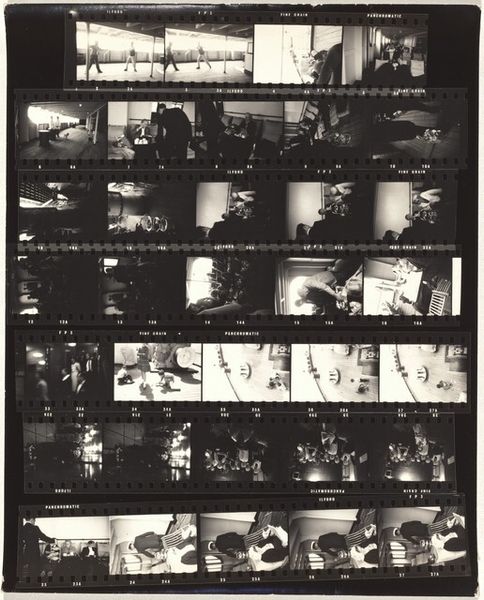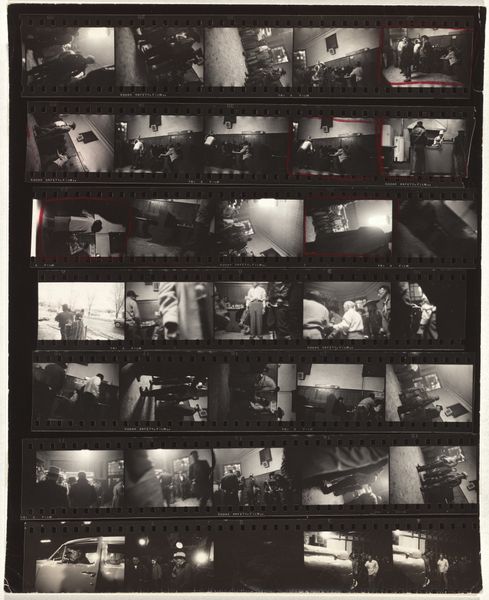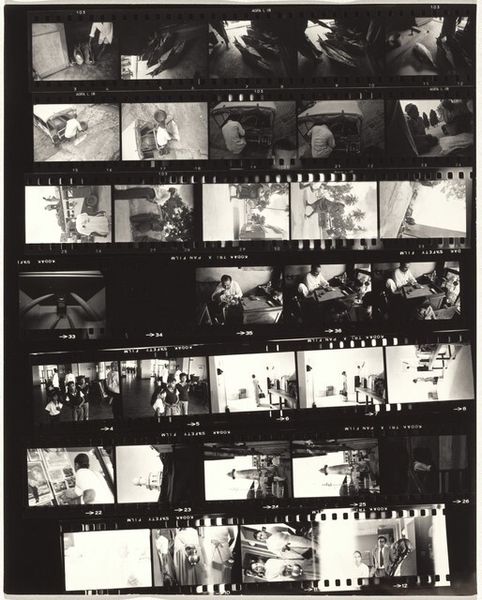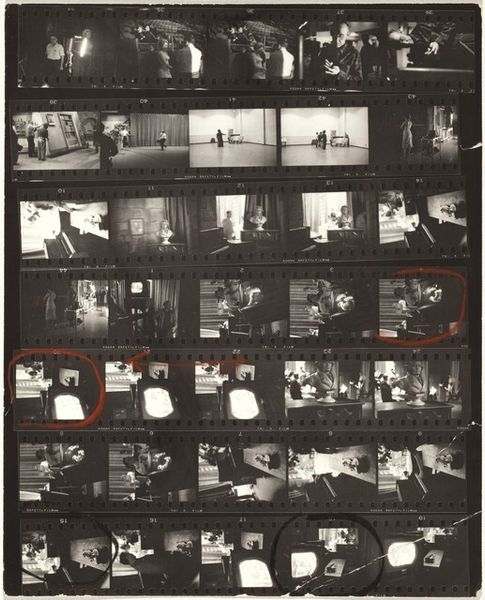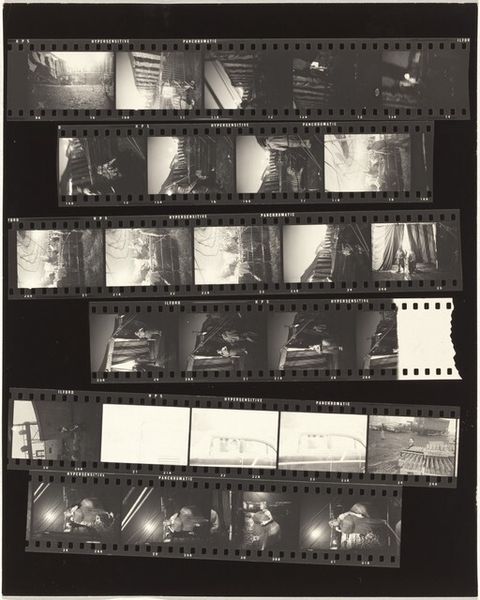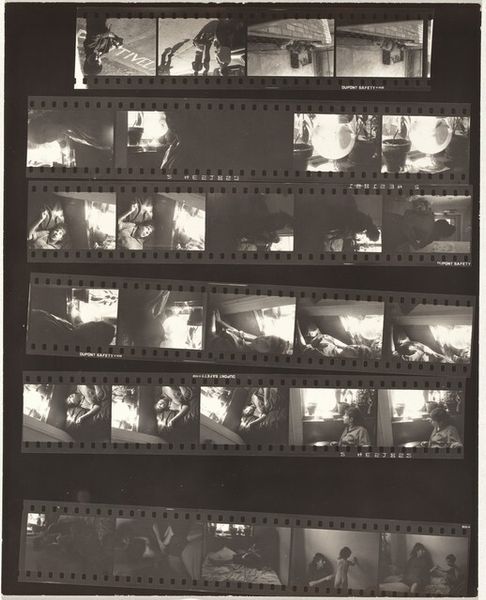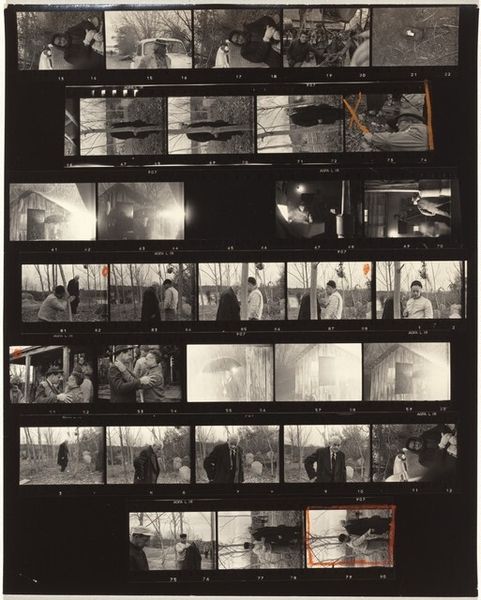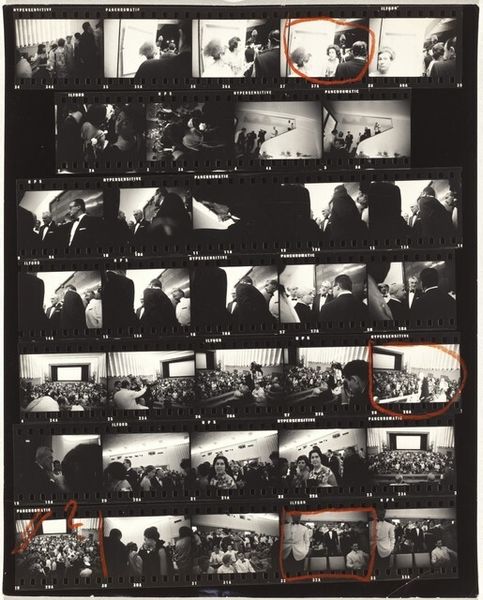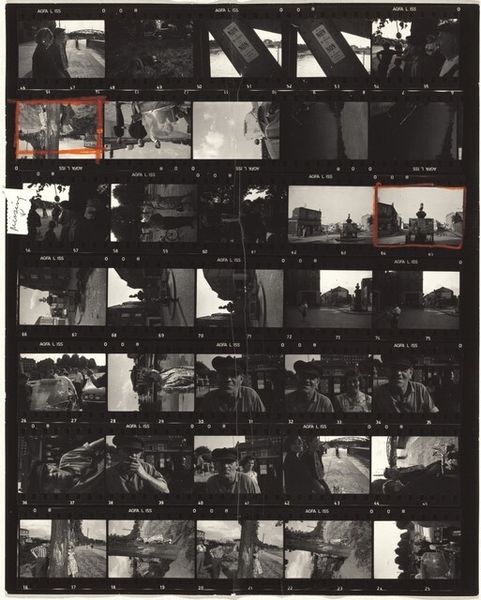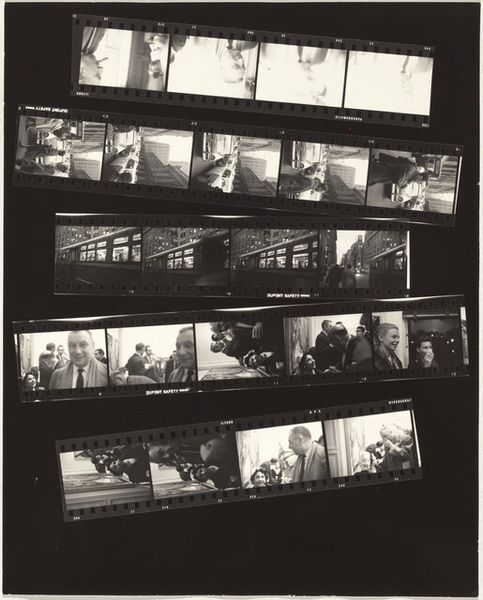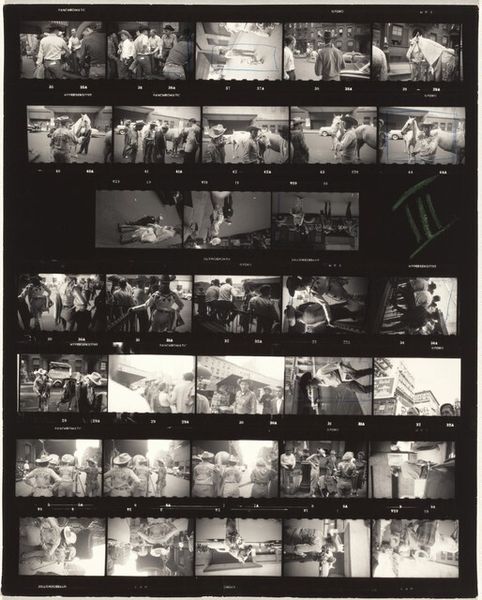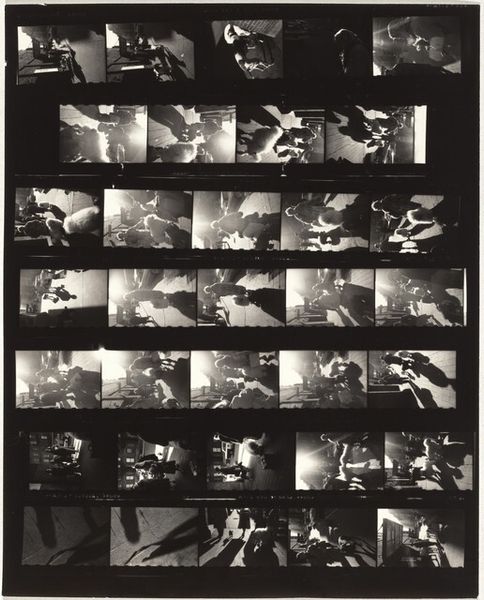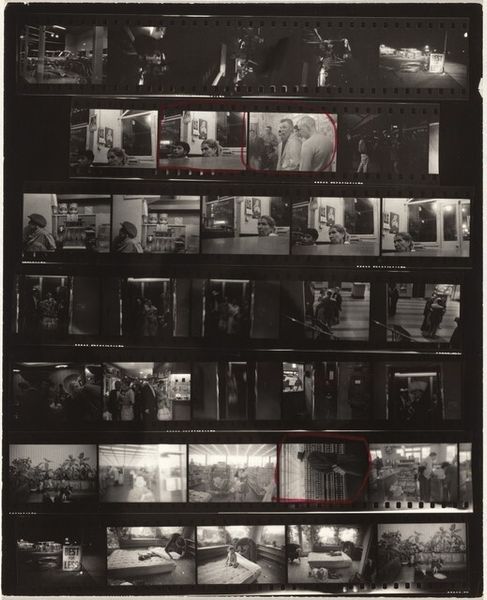
Dimensions: overall: 25.1 x 20.5 cm (9 7/8 x 8 1/16 in.)
Copyright: National Gallery of Art: CC0 1.0
Editor: Here we have Robert Frank’s “Tracy Nelson—Nashville, Tennessee no number” from 1969, a gelatin silver print. It's basically a photographer's film contact sheet with different images... it feels like a very personal look into his creative process. What strikes me is the starkness and rawness of these images. How do you interpret this work in its historical context? Curator: That’s a keen observation about its rawness. The sheet presents a crucial insight into photographic agency. Frank’s decision to display contact sheets wasn’t simply a look into his process but a deliberate act, critiquing the institutionalized role of photography and photographers within art history. Editor: How so? Curator: By presenting the unedited contact sheets, he disrupts the conventional curated gallery experience. We often view singular images, meticulously selected, to reinforce an aesthetic ideal or narrative of genius. The contact sheet, by contrast, includes failures, alternates, blurs…a more egalitarian image culture. Frank challenges how the gallery mediates what’s considered ‘artistic’ and worthy of display, implicitly commenting on the power structures that shape our perceptions. Notice how that last row focuses on a mundane setting? Editor: It seems like such a democratic choice… making all those discarded attempts part of the artwork itself. Did viewers at the time understand this message? Curator: Not universally. Some critics derided the contact sheets as unfinished, even lazy. However, many artists embraced this move. Think about the post-war era, and increased focus on media manipulation. What better time to reflect on how photographs acquire cultural significance. Editor: So, it’s less about the specific images of Tracy Nelson, and more about Frank commenting on the presentation and authority within art? That's fascinating, a meta-commentary on the art world itself. Curator: Exactly. He makes us consider the gatekeepers who validate what gets seen. It is also about how mass media operates. By presenting this raw selection of shots he critiques an established culture and hierarchy within the art world.
Comments
No comments
Be the first to comment and join the conversation on the ultimate creative platform.
